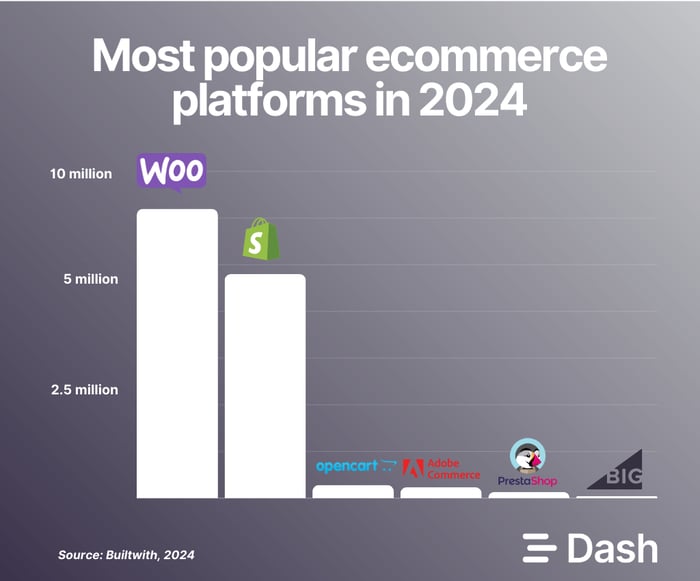Inbound Marketing
Unlock Growth: 4 Strategies of Content Marketing for Ecommerce

Lourdes Calderón
Lourdes Calderón | Jun 28, 2024 | 7 MIN READ
Jun 28, 2024 7 MIN READ

Content marketing isn't just about selling products. It's about building relationships with your target audience by providing them with valuable and informative content. Think of it as a conversation starter. When you offer insightful blog posts, engaging videos, or helpful guides, you establish yourself as an expert in your industry. This builds trust and positions your brand as a trusted resource, not just another online store.
However, creating effective content marketing for e-commerce requires a strategic approach. In this blog, we are going to talk about the 5 strategies of Content Marketing for Ecommerce. These pillars provide a framework for crafting content that not only attracts customers but also converts them into loyal fans of your brand.
Strategy 1: Craft Compelling Content
Compelling content marketing for Ecommerce goes far beyond simply listing product features. Think of it as a conversation starter, a way to engage your audience and build trust in your brand. Effective content offers genuine value, educates potential customers, and solves their problems.
So, what makes content compelling? It starts with understanding your audience. Through research and buyer personas, you discover their needs, interests, and pain points. Then, you craft content that directly addresses those. For instance, if you sell athletic wear, forget just listing fabric details. Create workout guides, interview fitness influencers, or offer tips on choosing the right gear for different activities. This content resonates with your audience and positions you as an expert, not just a seller.
People are drawn to engaging visuals, so incorporate high-quality images, infographics, and even videos into your content marketing for Ecommerce. A captivating product image can grab attention, while a well-produced video tutorial can showcase product features and benefits in a dynamic way.
But where do you publish this fantastic content? The answer depends on your brand and target audience. For a business-to-business (B2B) audience, LinkedIn might be the perfect platform. For a younger audience interested in fashion trends, consider the power of TikTok. The key is to identify which channels your target audience frequents most.
Here are some popular content formats to consider for your content marketing for Ecommerce:
- Blog Posts:
Informative articles that address audience needs and showcase your expertise.
%2010.36.05%20a.%20m..png?width=700&height=329&name=Captura%20de%20pantalla%202024-04-24%20a%20la(s)%2010.36.05%20a.%20m..png)
- How-To Guides:
Step-by-step instructions that help customers solve problems or use your products effectively
-
Product Reviews:
Unbiased reviews from satisfied customers or industry experts can build trust and encourage buying decisions.
-
Infographics:
Visually compelling graphics that present complex information in a digestible way.

Source: Dash - Ecommerce statistics to get you ahead in 2024
-
Social Media Posts:
Engaging and visually appealing posts (with relevant hashtags!) can drive traffic to your website and build brand awareness.

Real-World Inspiration: Ecommerce Content Marketing Success
Examples are powerful, so let's see how some brands mastered content marketing across the customer journey:
Buzzfeed, known for its quirky quizzes and listicles, partnered with TooFaced to create a fun quiz titled "What Should Your Signature Makeup Look Be?" This lighthearted content not only generated buzz but also subtly introduced viewers to the brand's product range.
Beardbrand, a men's grooming company, built a loyal following with its informative YouTube channel. Their well-produced tutorials on beard care and styling not only showcase their products but also establish them as grooming experts, attracting potential customers seeking solutions.
These examples highlight how content marketing can be tailored to each stage of the online shopping experience. By providing valuable and engaging content, you can transform your brand from a faceless store in a digital maze into a trusted guide, leading customers toward a confident purchase.
Strategy #2: Optimize for Search Engines
When you optimize your content marketing for Ecommerce with SEO best practices, you increase the chances of your content appearing on the first page of search results for relevant keywords. This translates to more organic traffic, more website visitors, and ultimately, more potential customers.Here's how SEO fuels your content marketing for Ecommerce:
Keyword Research: The foundation of SEO is understanding the search terms your target audience uses. Keyword research helps you identify relevant keywords with high search volume and low competition. By strategically integrating these keywords throughout your content, you signal to search engines that your content is relevant to specific user searches.
Content Integration: Don't just stuff keywords into your content! Aim for natural integration that enhances readability. Focus on creating valuable content that addresses your audience's needs while incorporating relevant keywords organically. This improves your search engine ranking without sacrificing user experience.
On-Page Optimization: There are additional ways to optimize individual content pieces for search engines. This includes crafting compelling title tags and meta descriptions that accurately reflect your content and entice users to click. Optimizing image alt text with relevant keywords also helps search engines understand your content and improve image search ranking.
Strategy #3: Promote Your Content Like a Pro
Effective promotion ensures your content reaches the right audience and maximizes its impact. Here's how to become a content promotion pro:The SEO Advantage: Remember SEO from the previous strategy? It plays a crucial role in organic reach. By optimizing your content for relevant keywords, you increase the chances of it appearing on search engine results pages (SERPs) for those keywords. This translates to organic traffic from potential customers actively searching for the information you provide.
Social Media Savvy: Don't underestimate the power of social media marketing for Ecommerce. Share your content strategically across your social media platforms (organic posting). Tailor your message to each platform, using relevant hashtags and engaging visuals. Consider paid social media advertising to further amplify your content's reach and target specific demographics or interests.
Influencer Marketing Power: Partnering with relevant influencers in your niche can be a game-changer. These established figures have a built-in audience who trust their recommendations. By collaborating with influencers, you can leverage their reach to introduce your content and brand to a whole new audience.
Amazon Optimization: If you sell your products on Amazon, don't neglect this valuable platform. Treat your product listings as mini-landing pages. Optimize product descriptions with relevant keywords that align with your website content. Use high-quality images and compelling video content to showcase your products in action. Consistency is key! Ensure the messaging and branding on Amazon align seamlessly with your overall content marketing for Ecommerce strategy.
Remember, consistent promotion is key! Keep your content fresh, engage with your audience, and stay updated on the latest trends to maximize the impact of your content marketing efforts.
Strategy #4: Track, Analyze, and Adapt
Creating stellar content and promoting it effectively is just the beginning. The key to long-term success lies in tracking, analyzing, and adapting your strategy based on data and audience feedback.Here are some key metrics to keep an eye on when evaluating your content marketing for Ecommerce:
Website Traffic: This metric measures the total number of visitors your website receives. An increase in traffic after publishing new content indicates your promotion efforts are working.
Conversion Rates: This metric reveals how many website visitors take a desired action, such as making a purchase or subscribing to your newsletter. Analyzing conversion rates helps you identify which content pieces are most effective at driving sales.
Social Media Engagement: Track metrics like likes, shares, and comments on your social media posts. High engagement indicates your content resonates with your audience and encourages interaction.
But it doesn't stop there!
Adaptation is crucial for staying relevant. Use the data you gather to inform your content strategy. For instance, if a particular blog post receives low traffic and engagement, consider revamping it with fresh information or a new format.
Don't forget the power of audience feedback! Respond to comments on your blog and social media posts. Conduct surveys or polls to gather direct feedback on the content you create. By being responsive and adapting your strategy based on data and audience insights, you ensure your content marketing for Ecommerce remains relevant, and engaging, and ultimately drives results.
TABLE OF CONTENTS
Stay Updated with Our
Latest Posts
Subscribe now to receive the freshest content, insights, and updates directly in your inbox.

Recent Articles


2024 © The Orange Box Agency – All rights reserved


%2010.49.13%20a.%20m..png?width=700&height=361&name=Captura%20de%20pantalla%202024-04-24%20a%20la(s)%2010.49.13%20a.%20m..png)


.png?width=90&height=90&name=facebook%20(1).png)
.png?width=94&height=96&name=Vector%20(1).png)